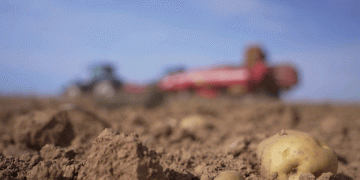In its 2023 Pesticide Data Program (PDP) Annual Summary, the U.S. Department of Agriculture (USDA) has delivered reassuring news for both consumers and the agricultural community: over 99% of the tested food samples had pesticide residues below the safety thresholds established by the Environmental Protection Agency (EPA). This outcome highlights the rigorous safety standards maintained in the U.S. food supply and underscores the effective pesticide management practices employed by farmers across the country.
An Extensive and Comprehensive Study
Each year, the USDA collaborates with the EPA to select food commodities for pesticide residue testing. In 2023, 9,832 samples were analyzed from 21 different food categories, encompassing a mix of fresh and processed fruits, vegetables, and nuts. By testing a wide variety of both domestic and imported products, the program emphasizes food items commonly consumed by infants and children, ensuring that even the most vulnerable populations are protected.
The selection and testing process is strategic. By rotating commodities annually, the PDP provides a broad and evolving understanding of pesticide residues. The data generated is integral to the EPA’s dietary risk assessments, ensuring that pesticide residue levels on foods remain well within safe consumption limits. The Food and Drug Administration (FDA) and EPA receive monthly reports throughout the testing year, and both agencies are alerted immediately if any concerning residue levels are detected.
Insights for Farmers and Food Industry Professionals
For farmers, the report is a testament to the effectiveness of modern pesticide management techniques. The results reflect positively on integrated pest management (IPM) strategies, precision agriculture, and advances in crop protection technologies that minimize the environmental and human health impacts of pesticide use.
The PDP data is also invaluable for food safety regulators, scientists, and agricultural engineers. It provides evidence-based insights that can guide future policy development, research, and innovations in safer and more sustainable farming practices. Furthermore, the rigorous testing framework offers a safety net that reassures the public about the food supply’s integrity.
The Role of State Agencies
The USDA partners with various state agencies to collect and analyze these pesticide residue levels. These agencies contribute by gathering samples from distribution points such as warehouses and grocery stores, ensuring a representative snapshot of the food supply. This partnership not only enhances the program’s efficiency but also extends its reach across diverse agricultural regions.
How the PDP Data is Used
The PDP data has multiple applications:
- Dietary Risk Assessment: EPA uses the data to evaluate the risk of pesticide residues in the diet, ensuring that all residues are within safe limits.
- Regulatory Oversight: If a residue level exceeds what is considered safe, immediate action is taken to address potential public health concerns.
- Consumer Confidence: The annual reports help maintain transparency and provide assurance to consumers about the safety of their food.
Key Findings from the 2023 Report
The latest data reaffirms the safety of the U.S. food supply. With more than 99% of samples below EPA benchmarks, there is little risk associated with pesticide exposure from commonly consumed food items. This finding is consistent with previous years, demonstrating a stable and safe food production system.
However, the summary also serves as a reminder of the importance of continued vigilance and adherence to pesticide regulations. For example, crops with higher pesticide use, such as strawberries and spinach, are carefully monitored to ensure compliance with safety standards.
The 2023 PDP report is a positive indicator of the agricultural sector’s commitment to food safety and environmental stewardship. The collaboration between USDA, EPA, and state agencies ensures that food safety remains a top priority. For farmers, the findings validate ongoing efforts to apply pesticides responsibly and sustainably, while consumers can continue to trust that their food is safe and carefully monitored.






